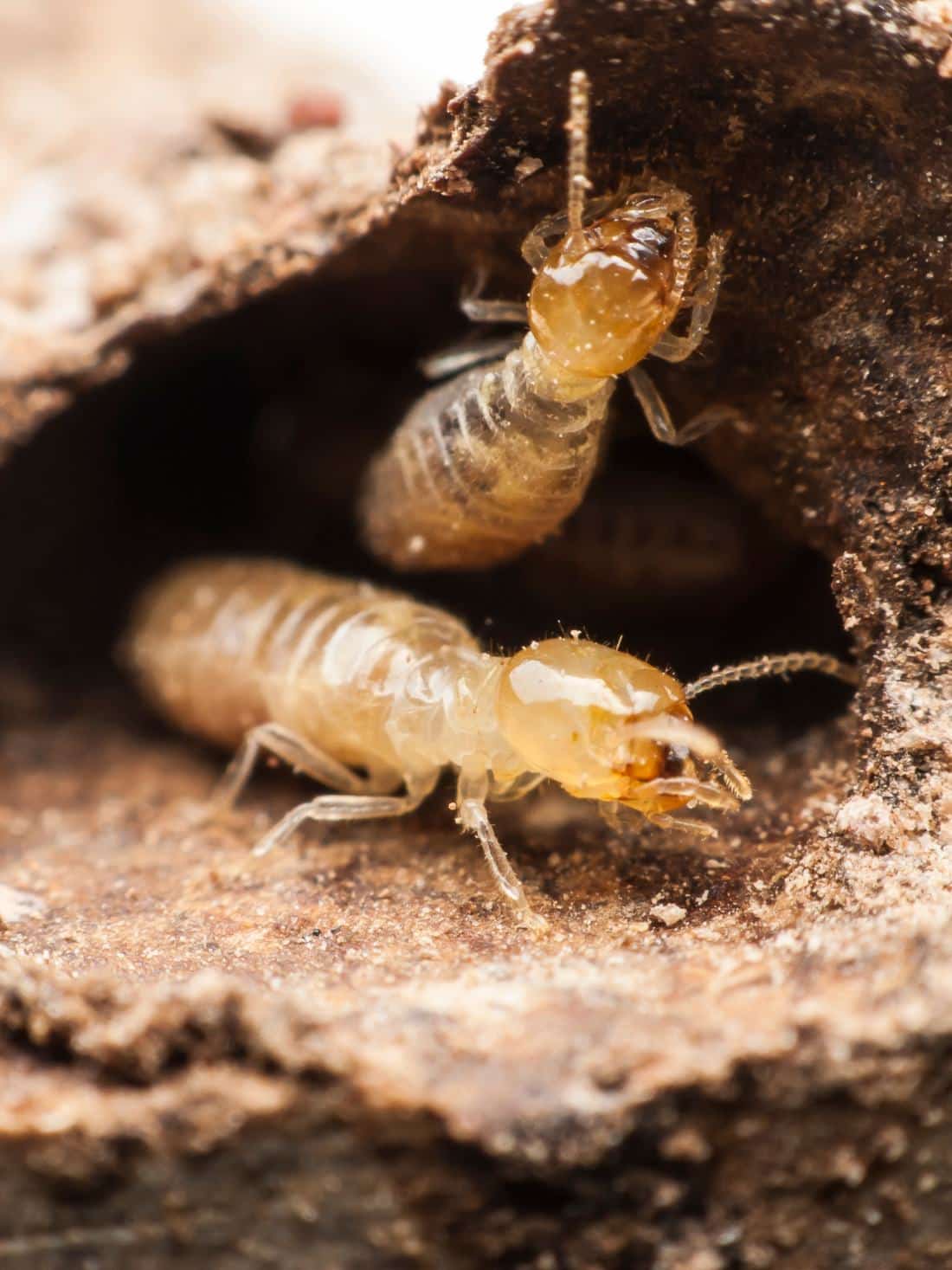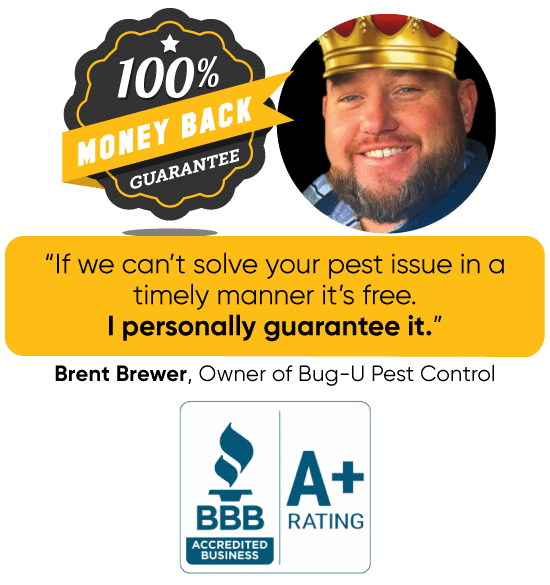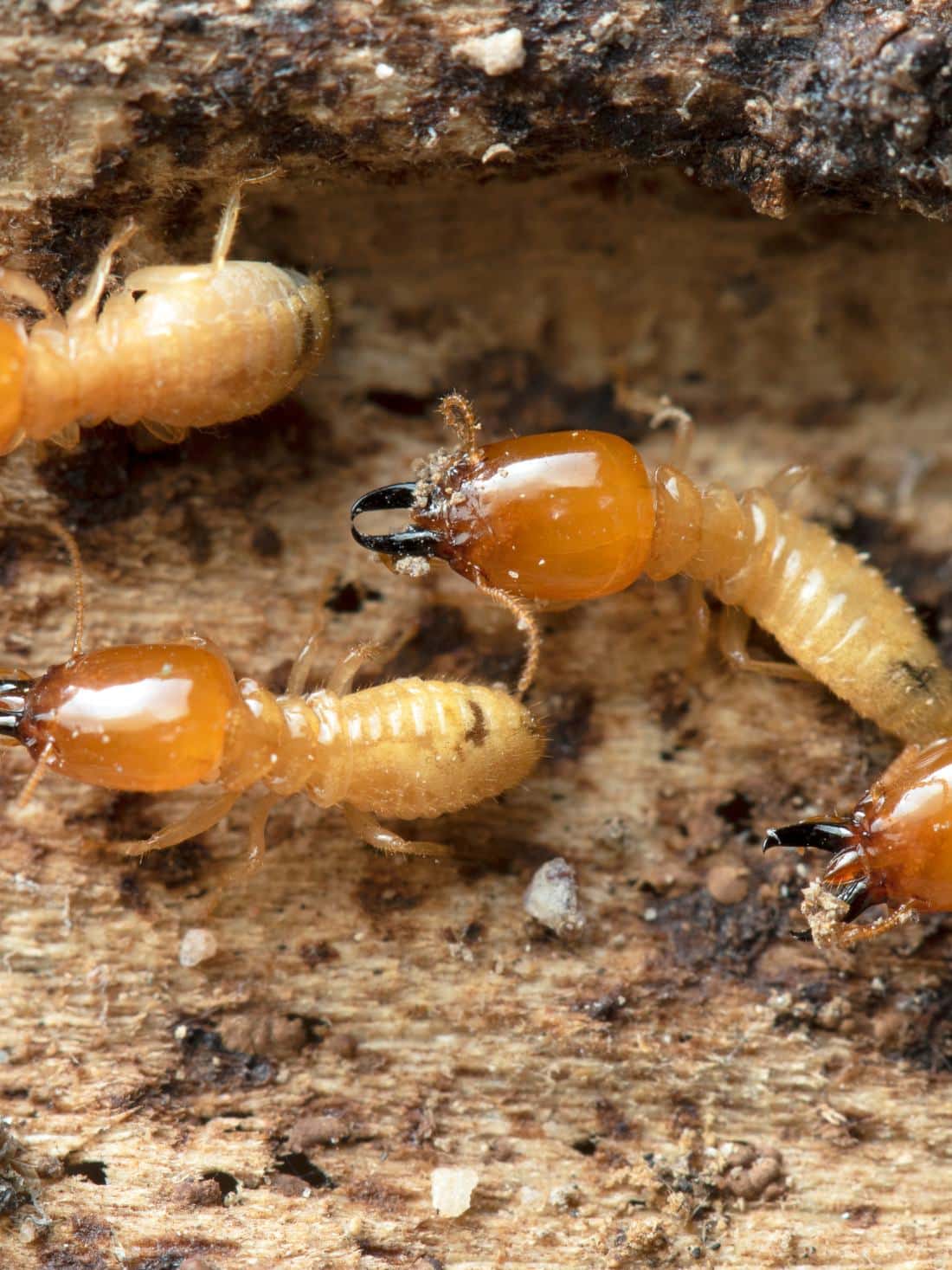Termite Control
Proudly serving, Hudson Falls, Saratoga Springs, Glens Falls, Clifton Park, Queensbury, and the surrounding communities
REQUEST YOUR FREE INSPECTION

Termite Control Upstate, NY
It is not always possible for an untrained individual to see evidence of termites; however, homeowners can sometimes identify a potential termite problem by being vigilant in and around the home. If you see any of the following, it’s time to contact a pest professional who can immediately determine the extent of the problem and provide a recommendation about the appropriate course of treatment.
- Mud tubes (used by termites to reach a food source) on the exterior of the home
- Soft wood in the home that sounds hollow when tapped
- Darkening or blistering of wood structures
- Uneven or bubbling paint
- Small piles of feces that resembles sawdust near a termite nest
- Discarded wings near doors or on windowsills indicating swarmers have entered the home
Call Bug-U Pest Control Today for a Free Quote.
Call us at (518) 747-2003


Subterranean Termites
Subterranean termites are found in every state except Alaska. This termite species lives in underground colonies or in moist secluded areas aboveground that can contain up to 2 million members. They build distinctive “mud tubes” to gain access to food sources and to protect themselves from open air. Subterranean termites are by far the most destructive species in the U.S.
Dampwood Termites
As the name suggests, dampwood termites infest wood with a high moisture content. Dampwood termites are normally larger in size than other termite species. They do not usually infest structures because of the low moisture content of wood in structures, however, care must be taken to avoid attracting dampwood termites to a structure. Dampwood termites are found in Pacific coastal and adjacent states, the desert or semi-arid southwest, and southern Florida.
Drywood Termites
Drywood termites infest dry wood and do not require contact with the soil, unlike the subterranean and Formosan termites. This termite species often establishes nests in roof materials and wooden wall supports and can infest dead wood that may be around homes. Although they don’t require as much moisture for survival as other species, they can also be found in wood near a water source such as a leaky pipe or water heater. Drywood termites are found in the southern tier states, from North Carolina through the Gulf Coast and into the coastal areas of California.
Formosan Termites
Formosan termites are a major pest species of subterranean termite. They originate from southern China, Taiwan, and Japan and have spread to other parts of the world including the United States. Formosan termites can cause significant damage to timber structures when they nest inside buildings. They are more aggressive than native subterranean termite species and can build larger colonies with higher populations.
Fortunately, despite their invasive nature Formosan termites are not a problem here in New York State and Vermont because of the region's cold climate. The cooler temperatures and shorter growing season make it difficult for Formosan termites to establish large colonies and thrive. Additionally, New York and Vermont have stringent regulations that require pest control professionals to inspect any wood brought into the state from areas known to be infested with Formosan termites. These measures help keep New York and Vermont free from Formosan termite infestations.

Subterranean Termites
Subterranean termites are found in every state except Alaska. This termite species lives in underground colonies or in moist secluded areas aboveground that can contain up to 2 million members. They build distinctive “mud tubes” to gain access to food sources and to protect themselves from open air. Subterranean termites are by far the most destructive species in the U.S.
Dampwood Termites
As the name suggests, dampwood termites infest wood with a high moisture content. Dampwood termites are normally larger in size than other termite species. They do not usually infest structures because of the low moisture content of wood in structures, however, care must be taken to avoid attracting dampwood termites to a structure. Dampwood termites are found in Pacific coastal and adjacent states, the desert or semi-arid southwest, and southern Florida.

Drywood Termites
Drywood termites infest dry wood and do not require contact with the soil, unlike the subterranean and Formosan termites. This termite species often establishes nests in roof materials and wooden wall supports and can infest dead wood that may be around homes. Although they don’t require as much moisture for survival as other species, they can also be found in wood near a water source such as a leaky pipe or water heater. Drywood termites are found in the southern tier states, from North Carolina through the Gulf Coast and into the coastal areas of California.
Conehead Termites
Conehead termites are an invasive species native to the Caribbean. They were first introduced to the U.S. in 2001. Originally called “tree termites,” they were renamed conehead termites to alleviate the misconception that this pest is only found in trees. Though the species was believed to been eradicated in the U.S. in 2003, the Florida Department of Agriculture and Consumer Services (DACS) recently confirmed the reemergence of this pest in Broward County, Florida. Unlike most termites, the conehead termite does not rely on underground tunneling to travel. Instead, they forage on the ground like ants, allowing them to spread quickly. Conehead termites are an extremely aggressive termite species known for causing widespread property damage in a short period of time.
Do you have termites?
Call Bug-U Pest Control right away at (518) 747-2003


